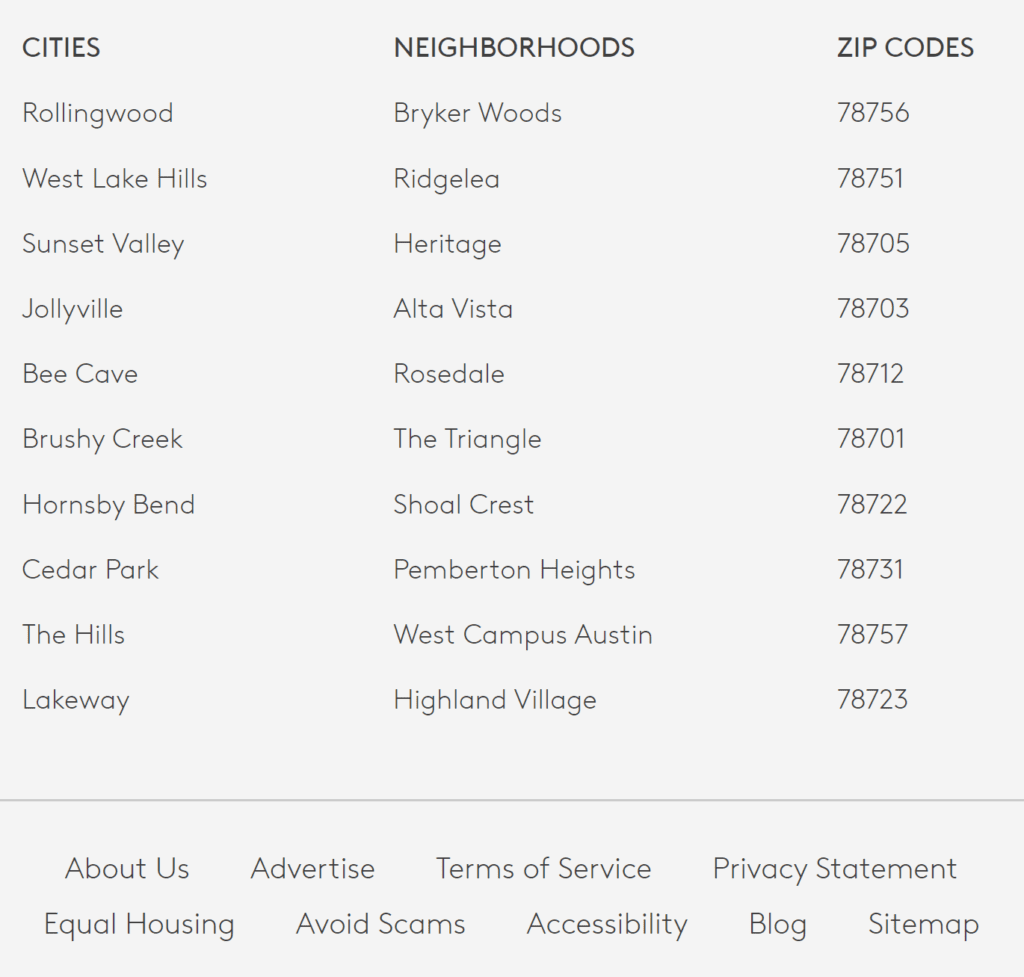Footer links are definitely an overlooked factor when it comes to SEO.
The footer of a website serves many purposes, and one of those also directly ties in with your website’s ranking and performance in organic search results.
Linking is an important aspect of SEO, as with what you do with the links that are living on your footer.
Let’s take a look at best practices for managing those links when it comes to optimizing for search.
Internal linking structure is very important for SEO, and also for helping users navigate your website in a natural way.
Footer links are considered site-wide links, or by another name, boilerplate links.
These types of links are links that appear on nearly every page of a website. These types of links are normally header links, footer links or links that appear on the sides of a website (floating widgets, and so forth).
Google wants to understand whether you’ve added footer links only for SEO purposes, or if they exist to help the end-users in their navigation process.
If Google determines those links were added to help users navigate your website, they are considered a positive item and Google will crawl those links. If these links are added strictly for SEO purposes, this will be seen as a negative in the eyes of Google and certainly something you want to avoid.
If for example, you have 100+ footer links set up pointing to different locations throughout the US, you’re probably going to want to switch that strategy up.
The footer of a website serves a purpose.
Generally, it’s fine to include the following types of footer links:
This is a bad example for the usage of footer links:

Above the page there’s already a ton of links from the header and in the actual content (80+).
This is an example of a good usage of footer links for SEO:

Just remember – you don’t want to go overboard with footer links. If a page already has 70-80 links, you don’t want to have 30+ footer links.
This is going to devalue the link value that is passed to other pages.
If you have external footer links pointing to third-party websites, you’ll want to ensure those are websites are related and in the same niche.
You don’t want to add a ton of external links to the footer to all types of different sites, as this will look unnatural.
Remember, the purpose of footer links should be to help users with navigating around your website.
Sitewide links are devalued now, and really don’t pass value in terms of link authority.
You’re going to want to add a “nofollow” tag to these external links.
Founder of Rock The Rankings, an SEO partner that helps B2B SaaS brands crush their organic growth goals. An avid fan of tennis, and growing micro-SaaS businesses on the weekend. 2x SaaS Co-Founder – Currently working to build and scale Simple Testimonial.
Book a 1-on-1 intro call with our founder that includes a FREE custom marketing plan. Start growing faster, today.